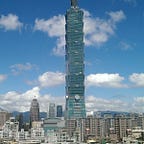HILD 12 — Discussion 5
I believe that Kawashima fixates on the role played by the Soaikai in suppressing Korean workers because it showed that colonial oppression and exploitation — while ultimately deriving from the state — can be channeled and enacted by actors across a racial-capitalist society. Indeed, rather than the “cut-and-dried oppositions between state power and marginalized, colonial minorit[ies,]” Kawashima invites us to think about how the Japanese government was able to effectively utilize the Soaikai as both its conduit for colonial oppression, and a distraction which could divert attention away from the very activities of the government itself (467). First, we need to understand that the Soaikai is not some independent welfare organization, but a “state-funded” organ under the umbrella of the Japanese government (Kawashima 466). The Soaikai co-opted nationalist sentiments and actively sought to conceptualize the idea of a distinct “Korean ethnic identity” that made both Japanese and Koreans more wary about ethnic or cultural differences, while simultaneously enabling a “‘divide and conquer’ (bungai tochi))” strategy which caused both Japanese and Korean communities to maintain suspicion against smaller groups of scapegoated “revolutionary Korean populations” (Kawashima 478). This effectively turned society’s attention towards monitoring and fighting supposed threats brought upon by ethnic tension within itself, becoming too divided in its differences to unite against state-sanctioned suppression of workers themselves.
However, when we look at the Taki Seihi strike, we see that the workers were able to effectively mobilize themselves across ethnic lines. Around 300 to 500 workers were involved in the strike despite there only being around 100 to 150 Korean workers, suggesting that non-Korean workers also participated (Matsumura, Lecture 4). Arguably, this is because both Japanese and Korean workers were affected by the early layoffs and wage cuts, and had prior experience in organizing against the company (Matsumura, Lecture 4). Thus, they probably shared a higher degree of unity from experience. More importantly, I believe the fact that the company barracks “became the strike headquarters” contributed to their solidarity (Matsumura, Lecture 4).Being their center of operations, the barracks in effect established a tangible ‘anchor’ of identity that laborers could see and feel their sense of communal unity not found within the constantly competing and feuding tension caused by the Soaikai in other places.
In contrast and reflecting the divisive strategy enabled by the Soaikai, Japanese news media reporting on Mr. Kim and Matsuo Shina’s relationship was keen on highlighting “ the dramatic reunion of two lovers[,]” especially depicting Matsuo Shina as an innocent youth who had “falling into [the] temptation” of an older Korean man taking advantage of her (Matsumura, Lecture 3). By stressing the ethnicities of the lovers and applying a contrasting image of purity and illicit sinfulness to the respective lovers, the media could divide attention along ethnic lines and drive a wedge between Japanese and Koreans workers (let alone society), create tensions between them, and thus obstructing a realization of solidarity under capitalist oppression.
